The new “The Invisible Man” brings real life issues women face to the forefront and explores the horror of domestic abuse, gaslighting, and power dynamics.
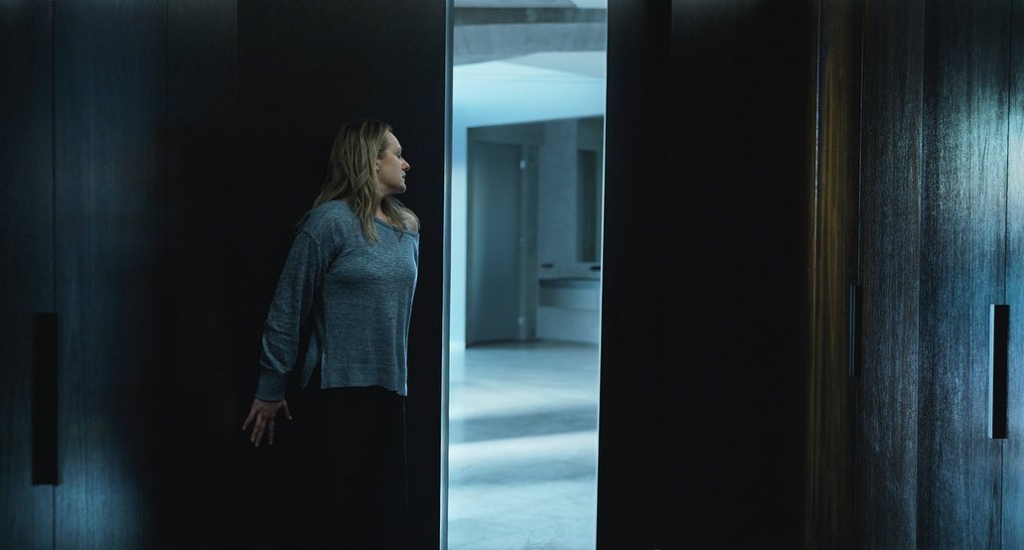
Note: The following piece contains heavy spoilers for The Invisible Man 2020 and discusses deeply triggering subject matter. Please proceed with caution.
When the viewer is first introduced to Cecilia Kass, she is sneaking around the house, gathering her possessions, and prepping to make her escape from her abusive partner, Adrian Griffin. Adrian is wealthy, intelligent, and charismatic, a decidedly deadly combination for someone with an abusive and controlling personality. Cecilia carefully tiptoes around a gorgeous modern architecture style house that is less of a home to her and more of a prison.
She manages to narrowly get away, the only casualty being her sister Emily’s passenger side car window punched out by an enraged Adrian. Cecilia is hastily transported to the home of her friend James Lanier. There she stays for two weeks, unable to move from inside the house due to the paralyzing fear that Adrian will find her. She appears corpselike, a person on high alert, her guard never down. With Adrian’s money and influence he could literally be anywhere.
It’s a heartbreaking portrait of a life that real women have lived, one where they have to flee in the middle of the night and live with not only trauma but the terror of their abusive partners showing back up in their lives. The stark reality that inspired the film and its heroine is embedded deeply within the core of the message it conveys.
The Invisible Man is a meditation of domestic violence that refuses to sanitize the nasty and harrowing parts for the sake of the viewer.
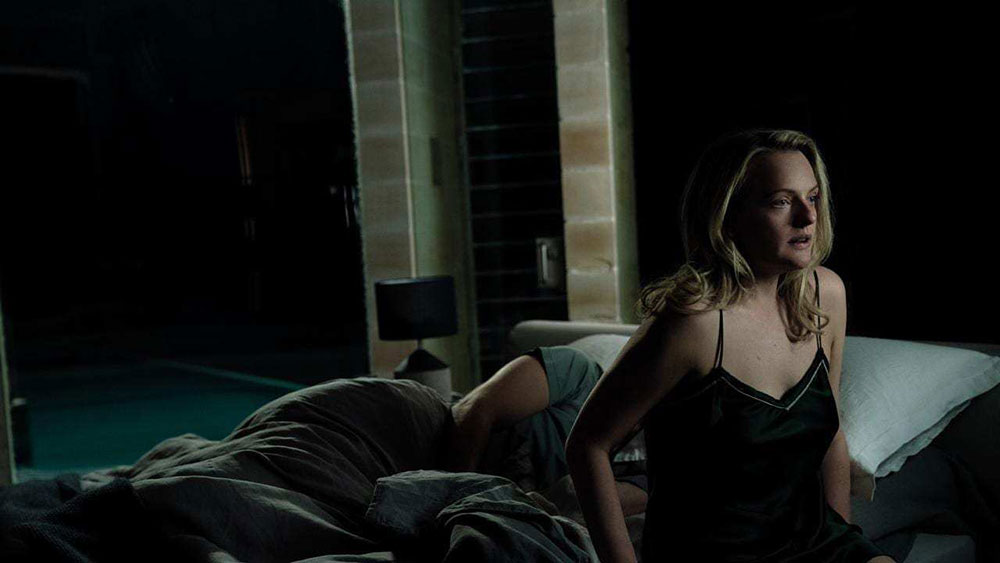
Director and writer Leigh Whannell wants the audience to be uncomfortable, because the horror in the film is based in women’s reality. While the trappings of a suit that makes the wearer invisible are not an actuality as of yet, abusive and controlling men are.
“He was a sociopath. He said that I could never leave him. He controlled how I looked and what I wore. Then there was controlling when I left the house and eventually what I thought,” Cecilia says, detailing her abuse at the hands of Adrian to James and Emily.
Adrian had successfully cut Cecilia off from those that she loved most, leaving her with no one but him to depend on. James and Emily are completely in the dark to Cecilia’s experience due to their lack of contact for the period of time Cecilia was in a relationship with Adrian. It’s not uncommon for abusers to cut their victims off from anyone who could potentially offer the victim support or a path to freedom.
During their relationship, every aspect of Cecilia’s life was controlled by Adrian. What she ate and what she wore were for him to decide. When she didn’t toe the line? James questions Cecilia if Adrian ever hit her. She nods and replies, “Among other things.” The audience can only imagine what those “other things” entail.
Adrian and Cecilia’s relationship has all the textbook red flags of a classic abusive relationship.
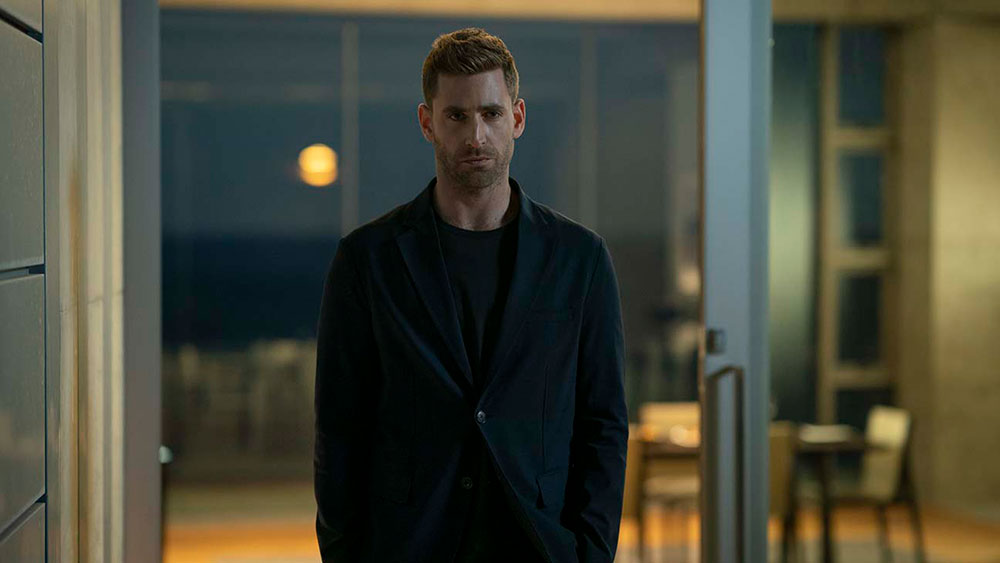
The Center for Disease Control (CDC) defines some of the finer points of intimate partner violence (IPV) as, “physical violence, sexual violence, stalking, and psychological aggression (including coercive acts) by a current or former intimate partner.”
If the audience is keeping tally, Adrian checks off each one of these facets of an abusive partner.
Cecilia has had to endure physical and sexual violence when she’s not enduring psychological violence. And once she does eventually get the chance to leave, Adrian stalks her with the intent to ruin her life. If he can’t have Cecilia, no one can. His overbearing control of Cecilia is a tenant of psychological aggression. She’s more of a possession and a plaything than a partner to Adrian.
Cecilia isn’t even allowed the freedom of thought around him, and she delineates times where Adrian would sit and stare at her, trying to figure out what she was thinking and causing her deep unease, worrying that her true thoughts would betray her and incur his wrath.
The CDC’s National Intimate Partner and Sexual Violence Survey reveals:
“About 1 in 4 women and nearly 1 in 10 men have experienced contact sexual violence, physical violence, and/or stalking by an intimate partner during their lifetime and reported some form of IPV-related impact. Over 43 million women and 38 million men experienced psychological aggression by an intimate partner in their lifetime.”
Cecilia’s character embodies the experience of victims of IPV.

Adrian fakes his suicide, and for a fleeting moment, Cecilia starts to pick up the pieces of her life. We see Cecilia start to settle back into herself, a Cecilia that is separate from Adrian and her own being. She buys clothes, including a nice new dress, and she buys them for herself. It’s a touching and simple moment, but it is a powerful moment. She’s doing these mundane activities for herself. She bought the dress because she liked it and not because he told her to.
Cecilia is looking toward the future and learning to be herself, her genuine self, again. There are clues scattered throughout the movie as to what Cecilia was like before Adrian. The audience is presented with a portrait of a woman who was a promising architect, who traveled to Paris, and who was vibrant and talented. It’s not uncommon for abusive men to target women who have such raw potential and subsequently destroy their sense of self. This very well could have been the case with Adrian and Cecilia given the information presented in the film.
The event that causes Cecilia to find the gumption to attempt to escape is that Adrian wanted a baby. Cecilia openly admits that she knew if they had a child together she would never be able to be free of him and that she would sneak and take birth control behind his back in order to prevent any sort of unwanted pregnancy.
The American College of Obstetricians and Gynecologists term this behavior as reproductive and sexual coercion.

The organization states, “Reproductive and sexual coercion involves behavior intended to maintain power and control in a relationship related to reproductive health by someone who is, was, or wishes to be involved in an intimate or dating relationship with an adult or adolescent.”
Adrian never truly desired a child with Cecilia. He desired to have even more control over her and a way to maintain the power he already had over her. There is a distinct link between domestic violence and acts of reproductive coercion.
Adrian publicly murders Cecilia’s sister and Cecilia is framed for it, ultimately leading to Cecilia’s institutionalization. The aforementioned events lead into the revelation of one of the film’s most gut wrenching plot twists: Cecilia is in fact pregnant with Adrian’s child. He had discovered Cecilia was taking birth control in secret and tampered with it.
The American College of Obstetrics and Gynecologists states:
“The most common forms of reproductive coercion include sabotage of contraceptive methods, pregnancy coercion, and pregnancy pressure. Birth control sabotage is active interference with a partner’s contraceptive methods in an attempt to promote pregnancy. Examples include hiding, withholding, or destroying a partner’s oral contraceptives; breaking or poking holes in a condom on purpose or removing a condom during sex in an attempt to promote pregnancy; not withdrawing when that was the agreed upon method of contraception; and removing vaginal rings, contraceptive patches, or intrauterine devices (IUDs). Pregnancy pressure involves behavior intended to pressure a female partner to become pregnant when she does not wish to become pregnant.”
Adrian’s lawyer brother Tom is revealed to have been a part of the sham suicide and Adrian’s quest to get Cecilia back from the start.
He offers her an ultimatum. If Cecilia agrees to keep the baby, she won’t be charged for her sister’s murder, and she can go back to her old life with Adrian. Tom tells Cecilia all he has to do is make one phone call to Adrian, and it will all go away at the small price of returning to Adrian and birthing his child. One of Cecilia’s worst fears has been realized, but she refuses to give into his demands.
It’s important to remember that the fetus Cecilia is carrying is just another bargaining chip in Adrian’s game to keep his control over her.
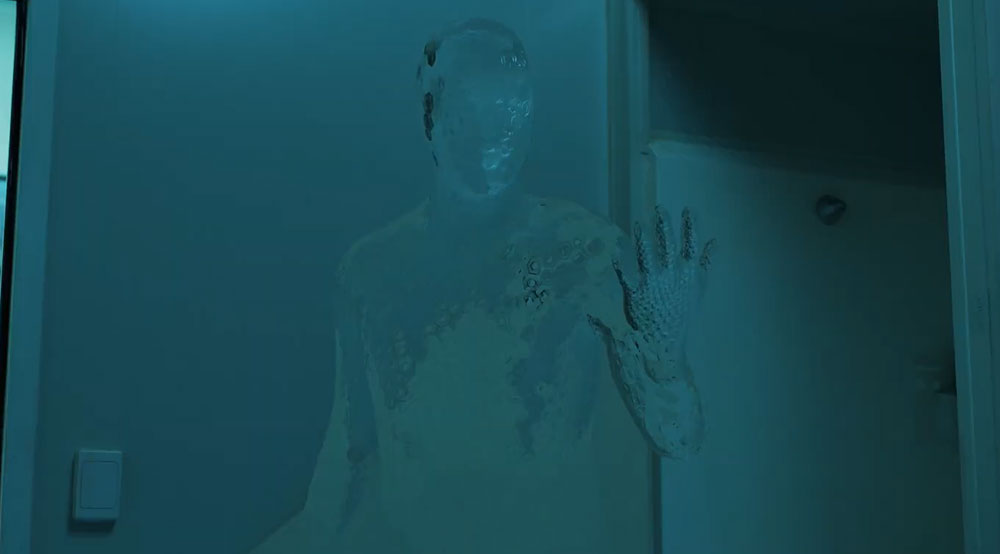
Throughout the film, an invisible Adrian continually physically assaults Cecilia, even after her pregnancy has become common knowledge, thus proving that this is less about the desire for a child and more about controlling Cecilia.
The battery that Adrian doles out to Cecilia is done so without any regard for the well-being of the baby and quite honestly could have easily caused Cecilia to miscarry at any time during the film. Adrian’s continual manhandling of Cecilia shows his lack of concern for her as the mother of his child and the fetus that she carries.
The site Healthline defines the term gaslighting as “a form of emotional abuse that’s seen in abusive relationships”.
It’s the act of manipulating a person by forcing them to question their thoughts, memories, and the events occurring around them. A victim of gaslighting can be pushed so far that they question their own sanity.” The term originated from a play titled Gas Light, written by British playwright Patrick Hamilton where a man manipulates his wife to the point that she begins to question her own perception of events taking place and her sanity as well. The play went on to be adapted into a film that was titled as Gaslight.
The theme of men gaslighting women is threaded throughout The Invisible Man.

When Cecilia discusses her and Adrian’s relationship, she continually brings up how he made her “feel crazy.”
Adrian often made Cecilia wonder if she was truly experiencing their relationship the way that she viewed it. And after she leaves him, he takes his gaslighting behavior to the next level by using his invention to make Cecilia further question her perceptions of reality and her sanity.
As a part of his dirty trick that involves his faked suicide, he leaves Cecilia a trust that contains five million dollars. She will continually get money from the trust if she does not commit a crime or if she is not declared mentally incompetent. During the film, she feels like she continually needs to defend what she’s experiencing to others and fears that even those closest to her will believe that she is crazy.
Being isolated from loved ones, feeling increasingly anxious, internalizing blame even when the victim is not at fault, questioning perception of the abuse that is being perpetrated, avoiding informing loved ones about the situation, and feeling like there is something gravely wrong with the situation are among the hallmarks of gaslighting that is listed in the book The Gaslight Effect: How to Spot and Survive the Hidden Manipulation Others Use to Control Your Life by Dr. Robin Stern.
Cecilia experiences all of the aforementioned signs of being gaslighted in her relationship.

Those who gaslight others are often narcissists who suffer from an inflated idea of self-importance, manipulate others for their own gain, are exceedingly envious and possessive, don’t respond to criticism well and often react angrily when confronted with criticism, and expect to be treated specially. Cecilia reiterates several times that Adrian is a narcissist and his behavior falls frighteningly in line with what narcissism entails.
Cecilia has to attempt to justify her sanity to those around her as she tries to explain the new torment that she is suffering due to Adrian. Those she loves most — Emily, James, and Sydney — become detached from her due to her claims that Adrian is alive and has devised a means to become invisible. Adrian takes every chance to make those around Cecilia believe that she is unstable, from sending Emily a nasty e-mail to hitting Sydney.
He causes her family and friends to doubt her sanity, and thus, he has achieved an even greater sphere of gaslighting and isolating Cecilia further.
The film makes the conscious decision to not show any of the abuse that Cecilia endured before the start of the film, and frankly it doesn’t need to.

The audience can plainly see the effect of the abuse on Cecilia ,and that is enough for the viewer to know that Adrian is unequivocally a monster in his own right.
The only insight that is needed is how absolutely and utterly traumatized Cecilia is from being in a relationship with Adrian. She shows obvious signs of post-traumatic stress disorder (PTSD). It is not uncommon for battered women to develop PTSD as a direct result of the abuse that they’ve endured. While the bruises may fade, the lasting mental effects are devastating and often takes years of therapy and treatment to overcome.
While the end of the film is a triumphant one, there is still the implication that Cecilia has to recover from the mental trauma that she sustained from Adrian.
Adrian is an avatar for toxic masculinity.

He benefits from his position as a white, cis, straight, wealthy male. And instead of leveraging that position for good, he chooses to be a horrid and manipulative person.
Whannell has no sympathy for Adrian and those like him and thus creates a perfectly relevant villain who echoes those equally powerful and disdainful men that are making headlines for their years of abuse and rape being uncovered. He has no problem using his money and his influence to manipulate those around him and escape any repercussions for his actions.
Everything around Adrian has to be perfectly in place, sleek and proper. His home serves as symbol for his overbearing and controlling nature. The home is devoid of any real personality or comforting touches, more like a model house than somewhere for a person to live. It’s beautiful, but it’s empty, much like Adrian himself.
On the surface, he’s a dreamboat, the total package that young girls dream about in a man when they grow up. He’s intelligent, handsome, and successful. These surface traits are what he uses to lure women in, and only when it’s far too late do they realize that the brilliant man is just a façade for a monster. He’s the most terrifying sort of monster too because anyone could fall for him. Any woman could easily be Cecilia, trapped in a gorgeous house, being told that they should be thankful to live there with such a good looking and rich man.
It’s a quandary that is reminiscent of the folktale about Bluebeard and his wives.

Traditionally, Bluebeard married several beautiful women who disappeared under mysterious circumstances. With his wealth and position, he could leverage his power to marry any young woman and isolate them from their family in his luxe palace. On the surface, the chosen new wife should feel blessed an influential and well off man has taken interest in her, but the truth of the situation is anything but a blessing.
While Adrian is the dominate sort who directly benefits from toxic masculinity, his brother plays his part in the torture of Cecilia as well and should be held equally accountable. Tom aids Adrian throughout his machinations to torture Cecilia and ultimately ensnare her in an unwanted pregnancy and life with him. At first, Tom tries to portray himself as a victim of Adrian’s manipulative ways as a way to gain Cecilia’s trust and empathy, but after Cecilia is institutionalized and found to be pregnant, Tom quickly drops the ruse.
Tom has unapologetically been in league with his brother and is no doubt benefitting from it in some way, though it’s highly likely that it’s monetarily. He might not be the main villain of the story at hand, but he is certainly complicit and worthy of condemnation.
One of the biggest twists in the film rests firmly on Tom’s complicity in the matter when he, in Adrian’s stead, invades the Lanier home with the intent to maim or kill Sydney as a means of harming Cecilia. Cecilia successfully kills Tom thinking that she has killed Adrian. But when she unmasks the dead body, she finds that Tom’s involvement in the entire situation was greater than she had ever considered.
Adrian does what Adrian does best and attempts to shirk responsibility for his actions.

He instead places the blame solely on Tom.
Adrian decides to play victim and act like he was actually tied up in a basement and that Tom was the one manipulating him the whole time and stalking Cecilia. Cecilia pretends that she is going to make nice with Adrian, and he sets up a nice dinner for the two of them. He’s unaware that she is wearing a wire and James is listening in on the conversation. She asks for Adrian to admit that he was the one who was stalking her and torturing her, but he refuses and instead starts to use his tried and true manipulation tactics to get Cecilia to doubt her experience.
He tells her that he’s the only one that understands her and that they need one another. Cecilia knows what she has to do next and uses Adrian’s tactics against him, donning one of the invisibility suits and making it appear that Adrian commits suicide by slitting his throat. The act parallels earlier in the film when Adrian slit Emily’s throat and made it look as if Cecilia was the murderer.
The only way that Cecilia can truly be safe and free is if Adrian is dead. Many women are forced to kill in self-defense when they are in an abusive relationship. It’s not uncommon for a woman’s last resort to be killing her abusive partner because she doesn’t feel like there is any other alternative, and she’s unable to leave the relationship safely.
The Family Safety Center’s fact sheet on battered women in prisons states:
“Male offenders dominated in murders motivated by possessiveness (82%), abuse (75%), and arguments (63%), whereas females were the vast majority of offenders in the category of self-defense (83%).”
The statistics are particularly sobering in the context of the movie considering Adrian is possessive and abusive, and Cecilia acts in self-defense.

The Invisible Man uses a fantastical plot in order to shed light on domestic abuse, a prevalent issue that doesn’t get the attention that it deserves. Women everywhere are subject to the horrors of IPV, and The Invisible Man uses the horror genre to bring the terrors that women face to the forefront.
Whannell and the cast use their talents and their platform to create an empathetic and cathartic story that will continue to impact viewers for years to come. The film is not an easy watch, but it is a masterful and pertinent piece that deserves much praise and attention.
If you or someone you know is experiencing IPV, please seek help from others. Below are some links to get you started. Be safe and take care of yourself.
- The National Domestic Violence Hotline
- Resources by State on Violence Against Women from Office on Women’s Health
- Domestic Violence Resource Guide via Healthline
- Domestic Violence National/Global Resources via org


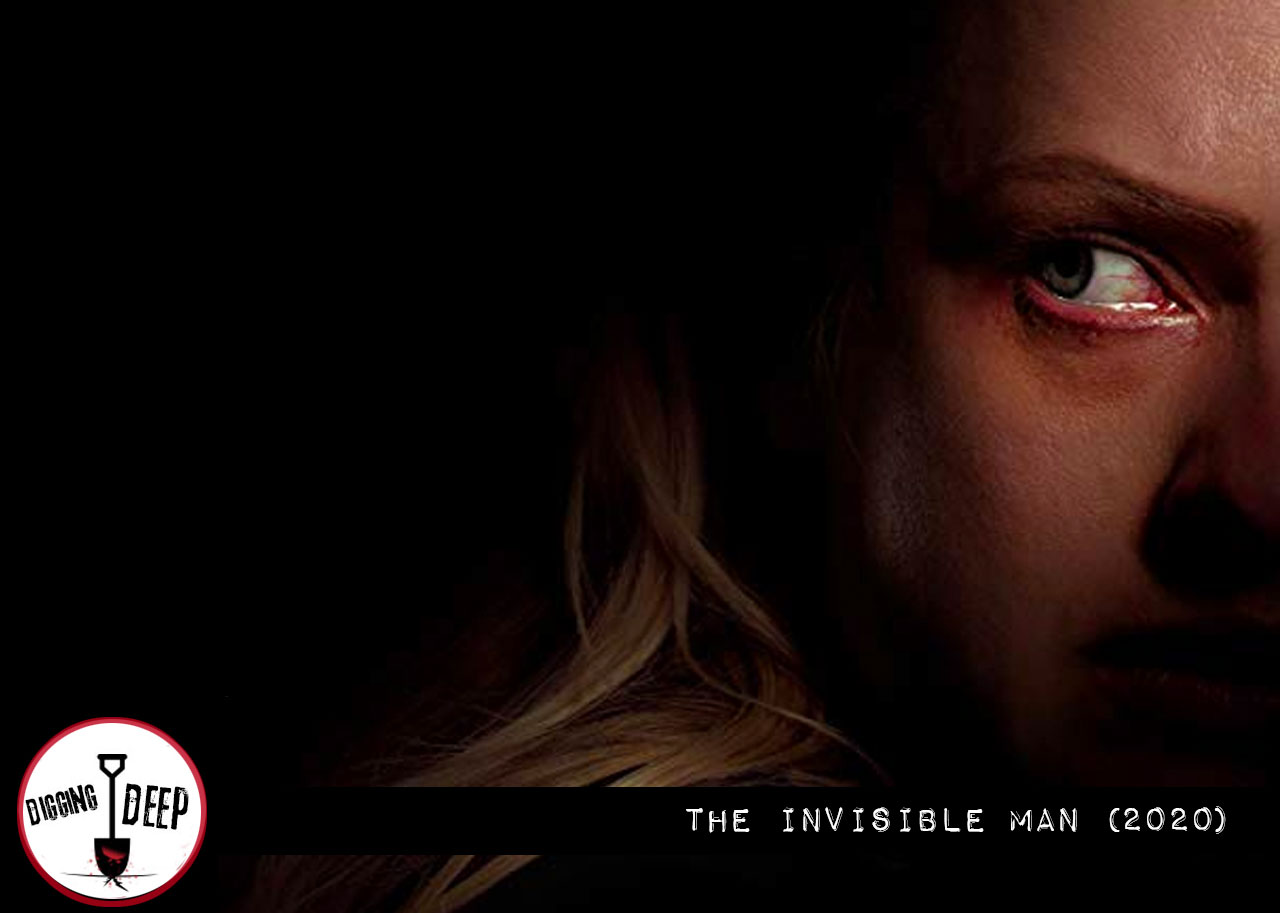











Follow Us!